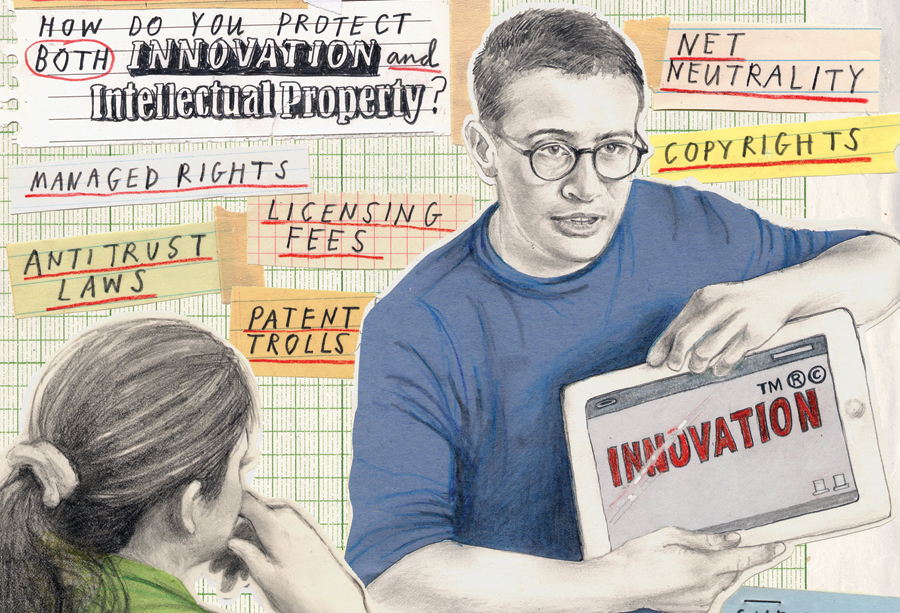The Juelsgaard IP and Innovation Clinic

Imagine that you could pay your electric company a premium rate in return for better access to power than your neighbors. Such deals are illegal in the United States because federal law deems electricity to be a vital utility that should be equally accessible to all customers.
But in January, the U.S. Court of Appeals for the District of Columbia ruled (Verizon v. Federal Communications Commission) that, because the FCC has not classified the Internet as a utility, Internet service providers (ISPs) could make deals with companies that provide content online, like Amazon and Netflix, to send their content through faster channels. The decision struck down the FCC’s previous open Internet rules, sometimes known as net neutrality, which called for treating all data on the Internet equally.
Many technology entrepreneurs, venture capitalists, and startup companies argue that this approach—currently the subject of proposed FCC regulations—would undercut innovation by allowing ISPs to create “fast lanes” for established companies who can pay and “slow lanes” for innovators and everyone else. They are making that argument with help from students at Stanford Law School’s Juelsgaard Intellectual Property and Innovation Clinic. The clinic, established in 2013 with a gift from Stephen Juelsgaard, JD ’82, focuses on the intersection between intellectual property protection and other regulation and innovation across multiple industries.
“FCC regulation is necessary to keep the Internet a level playing field, but it’s a complicated area of the law,” says Anna Sallstrom, JD ’14, who worked in the clinic during the spring quarter, “Focusing on innovation helped us understand net neutrality.” Sallstrom, along with clinic students Jack Donahoe, JD ’14, and Jaryn Fields, JD ’15, researched and authored a policy paper for Engine, a nonprofit that works to support technology entrepreneurs through research, policy analysis, and advocacy. The paper explained what powers the FCC has available to protect the Internet following the Verizon ruling and why a truly open Internet is essential for startups, innovators, and job creation.
“I was excited to work on this project because I had seen the discussion unfold and really cared about the issue,” says Sallstrom, who was in Washington, D.C., when the Verizon decision came down. “It was great hands-on experience, doing policy work that explored the public interest in an open Internet.”
Faculty and students at the clinic are also engaging with regulatory and intellectual property issues in the fields of biotechnology, pharmaceuticals, clean energy, and businesses that create and distribute information, such as news organizations and academic publishers. “We want to look broadly at the phenomenon of innovation in areas where it is reshaping society,” says Phil Malone, professor of law and director of the Juelsgaard Clinic. A former senior attorney with the U.S. Justice Department’s Antitrust Division, Malone taught at Harvard Law School and directed the Cyberlaw Clinic at the Berkman Center for the Internet and Society before coming to Stanford in 2013.
“Intellectual property issues tend to be industry-specific,” says Malone. “Software developers, pharmaceutical companies, and medical device manufacturers all innovate in different contexts with different incentives. Our goal is to train our students to advocate for balanced policies that maximize incentives for the creation and production of new technologies, services, and information without impeding innovation, as our current system sometimes does.”
The existing patent system was designed to spur innovation by preventing the unauthorized copying or use of inventions. Now, however, flaws in that system and rapid growth in high-tech fields have fueled the rise of so-called patent “trolls”—people and companies who buy up patents for ordinary inventions, then threaten to sue alleged infringers unless their targets pay hefty licensing fees.
Until Congress reforms the patent system, many companies are looking for strategies to avoid abusive patent lawsuits. Marta Belcher and John Casey, both JD ’15, co-authored a guide, called “Hacking the Patent System,” for the Electronic Frontier Foundation, Open Innovation Network, and Engine. The guide describes alternative techniques, such as patent aggregation and patent pledges, in which companies pay monthly or annual fees to join a collective whose members purchase patents and pledge to use them only defensively.
“By nature, law school is very broad, but the clinic was a chance to go deeply into one area,” says Casey. “I have a much better understanding of the IP world after focusing on it for a whole quarter. And we had time to work on our professional writing and really craft the paper.”
Working with clients like Engine and the Electronic Frontier Foundation,which in turn advocate for many smaller organizations, serves one of the clinic’s core goals: To give a voice to stakeholders with vital interests in current policy debates who would not be heard otherwise. Malone also wants students to develop a deep and nuanced understanding of the relationship between IP and innovation.
“This field can push people to extreme positions. Reflexive views—such as the argument that people will only create if they can completely protect their intellectual property or conversely that information should always be free—are too simplistic,” Malone says. “We’re in the early stages of really understanding the structures and incentives that promote innovation, as academics are beginning to do valuable empirical research in this field. The Juelsgaard Clinic is focused on ensuring that SLS graduates are well-prepared to be effective advocates for sound innovation policies.” SL
